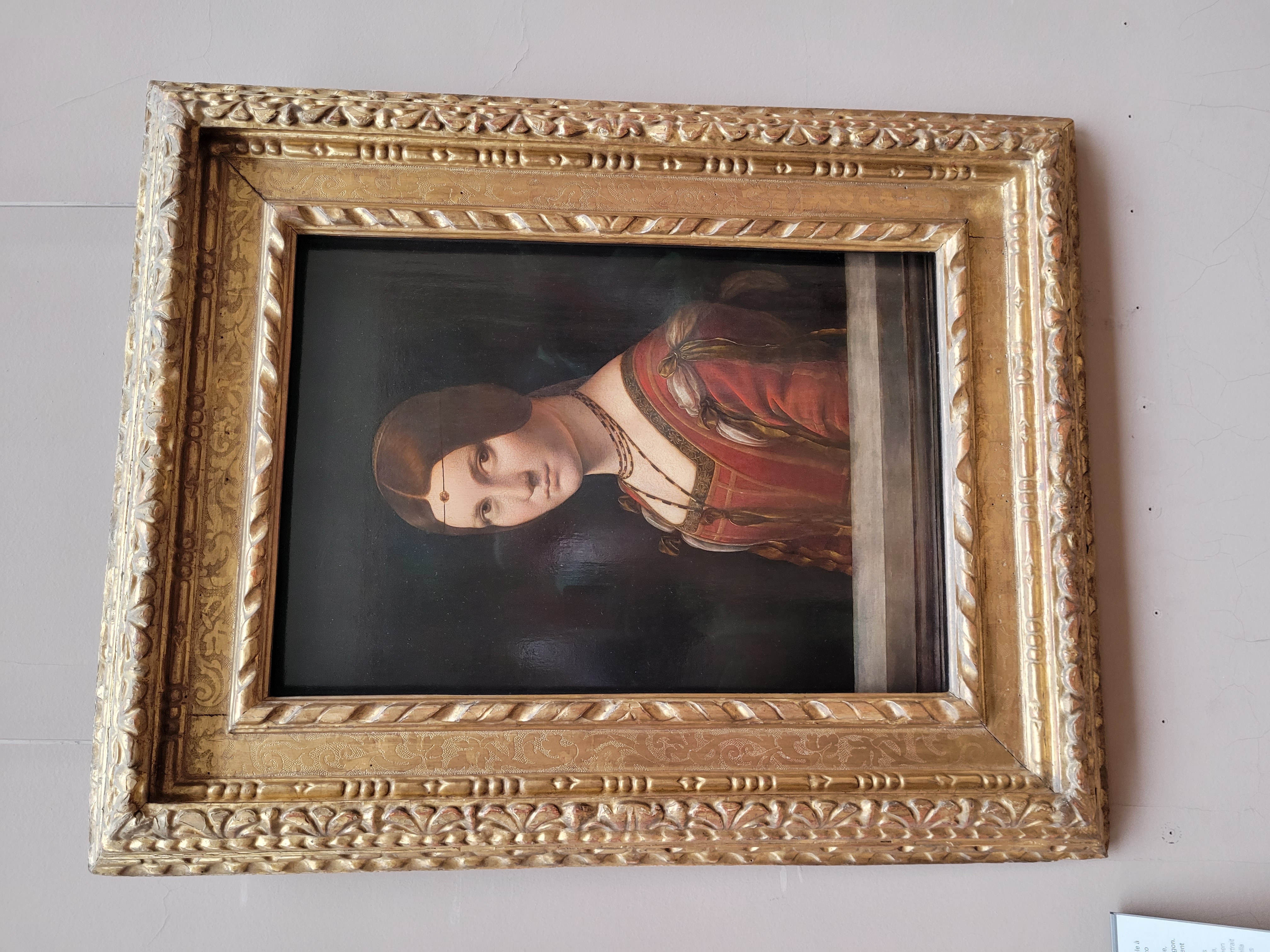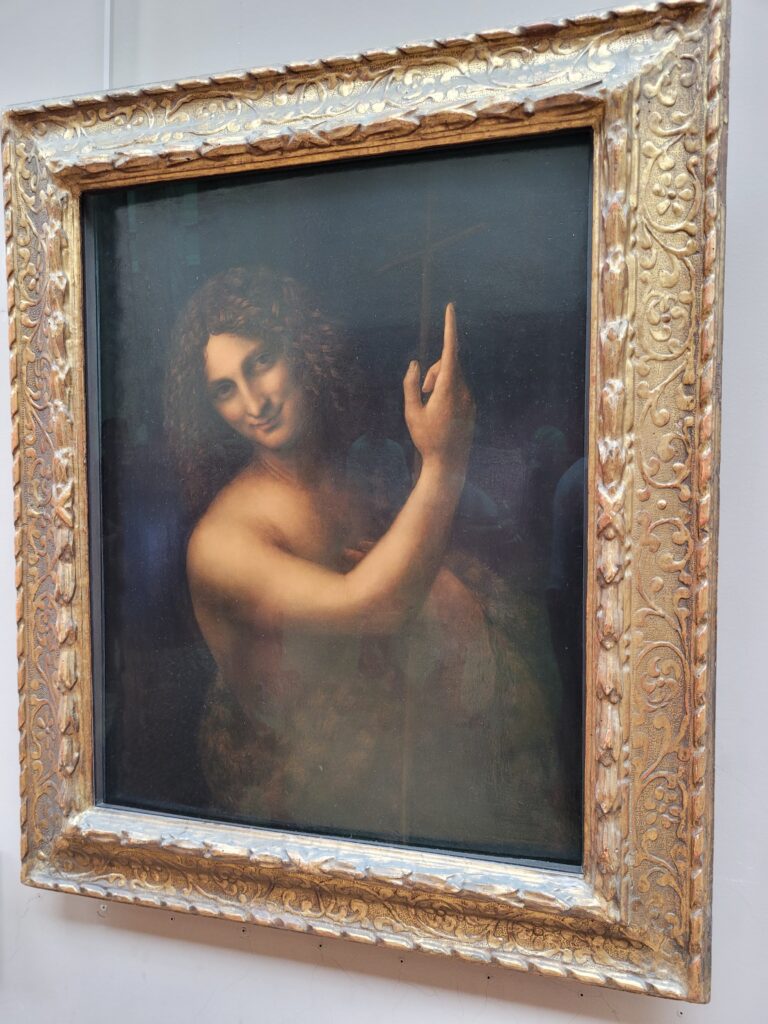The Da Vinci Road Trip: The Louvre to Chambord to Clos Lucé
Leonardo Da Vinci is one of the most captivating characters from history. His mastery of the sciences of his day as well as his achievements in art, architecture, and engineering are the highest example of the Renaissance.
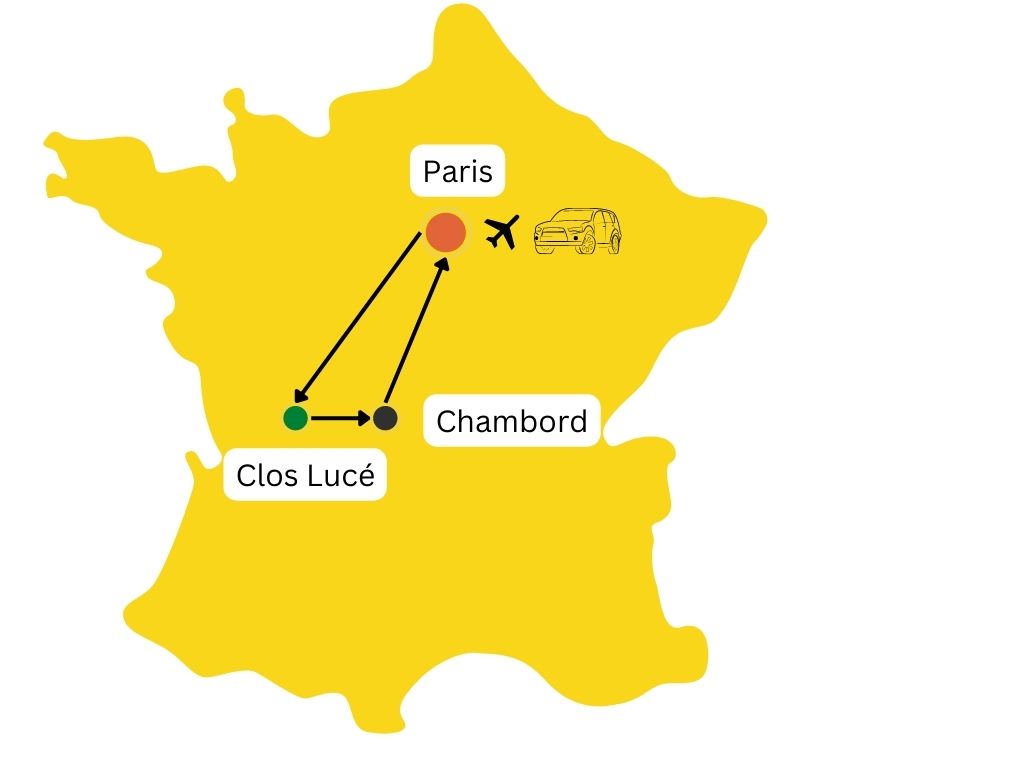
Though he was born in Italy, Leonardo was truly a citizen of Europe, and he was no stranger to France. In fact, this country boasts a tremendous amount of Leonardo history within its borders, all waiting to be seen on your next vacation to Paris.
If you would like to learn more about this enigmatic and transformative figure, you should come on my Da Vinci Road Trip. This is a luxurious, privately chauffeured tour where you witness the legacy of Leonardo first hand.
You get a dedicated driver to take you everywhere you want to go to see the great works of Leonardo as well as places he spent some of the most important periods of his life. Plus, you don’t have to worry about renting a car or finding your way through the French countryside.
Let’s put my 20 years of experience to work for you.
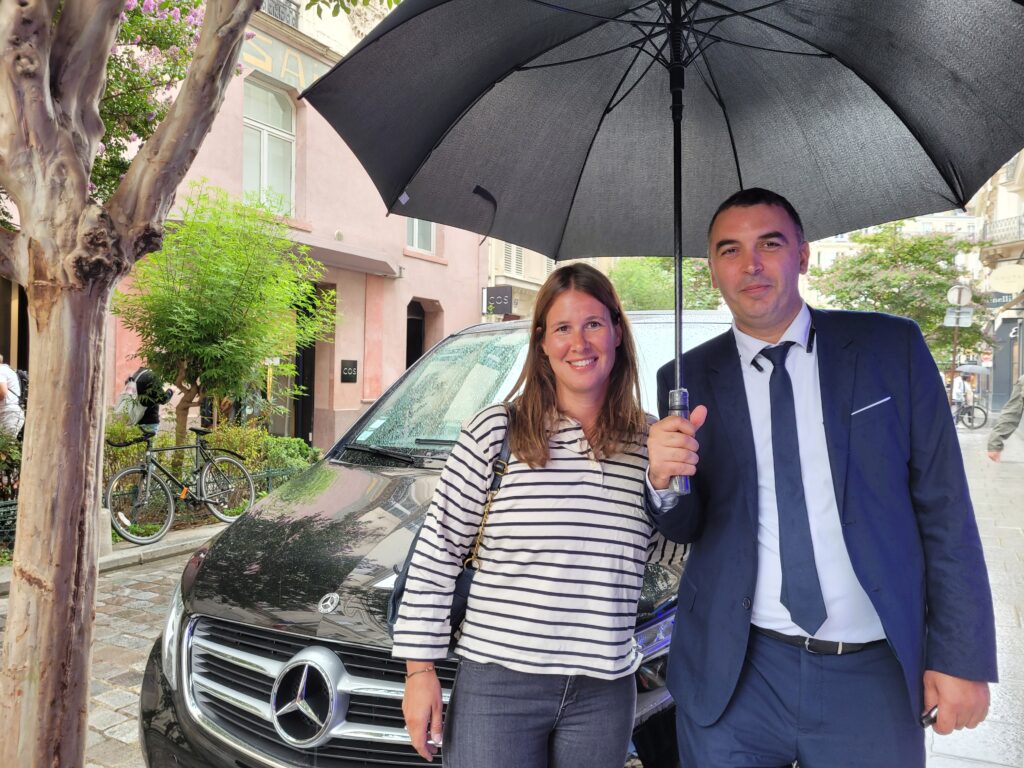
To celebrate this exciting new road trip, let’s take a peek at the life of the man himself and the things you will see on the Da Vinci Road Trip!
Who was Leonardo da Vinci?
Leonardo (1452 to 1519) was a polymath and leading figure of the Italian Renaissance. He was a painter, sculptor, architect, engineer, inventor, and scientist.

After dying in his large château in France, he left behind 13,000 pages of notebooks. Historians have since poured over his writings and found that he made many scientific breakthroughs long before they were popularly known, especially in the field of anatomy.
His notebooks also include dozens and dozens of inventions that conceive of technology that would not be mastered until centuries after he first wrote them down. These famously include his flying machines and proto-tanks.
He was frequently hired by governments to make intricate and accurate maps as well as design buildings and tackle problems of civil engineering.
And among all this work, he managed to create some of the most important works of art ever.
In Leonardo’s lifetime, he was widely regarded as an unparalleled genius. His ability to combine the arts and sciences continues to fascinate us today. For him and many of his contemporaries, there was not the strict line between the two fields as there is now. Having a foot in both worlds gave Leonardo endless avenues to learn and apply new knowledge.
When he reached the age of 65, Leonardo was disgruntled. He was living in Rome, keeping a low profile due to political upheaval going on in the region. The master knew his time on earth was running short, and he yearned for a change.
In late 1516, he accepted an invitation by King Francis I of France to enter the service of the throne. He was granted the use of a mansion now called Clos-Lucé, and there, along with his trusted disciple Melzi, he entered a furiously productive period. It’s in this French château that Leonardo put together scientific treatises and wrote about the art of painting. And it is here that he died in 1519.
Since his death, many of his artworks have found their way to the greatest museum in the world — the Louvre.
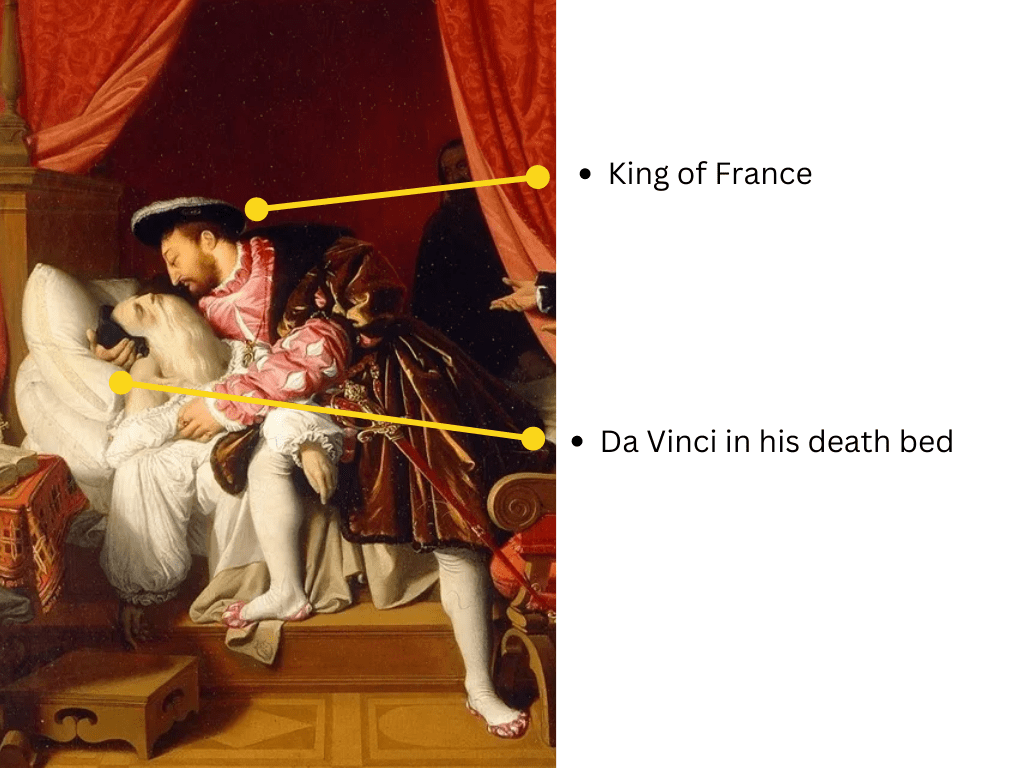
Leonardo at the Louvre
The Louvre holds five paintings and 22 drawings by the Italian Renaissance master, making it the largest single collection of Leonardo’s artwork in the world.
When we look through the five paintings on display here, we find some of the most exquisite pieces in the entire museum.
1- The Virgin of the Rocks – Louvre, Paris
This work, completed sometime between 1483 and 1486, is an oil on wood panel showing the Virgin Mary with her child Jesus. They are visited by the angel Uriel and the baby Saint John the Baptist. There is a second version at the National Gallery in London, but the work sitting in the Louvre is considered the primary one.
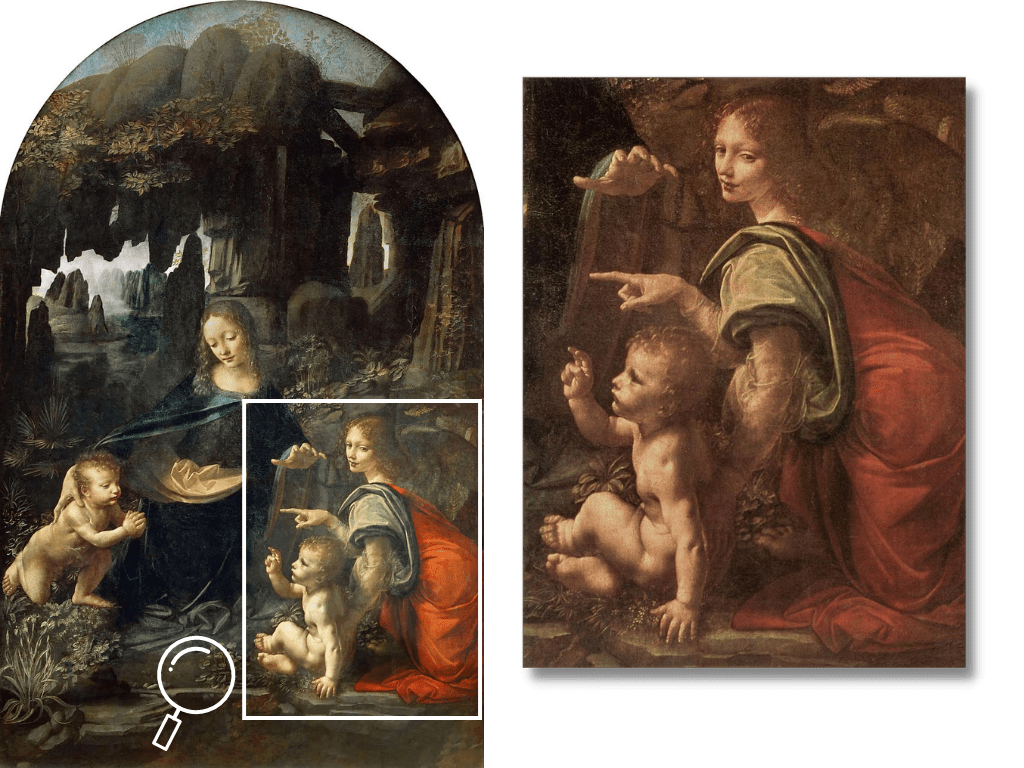
Its rocky background and striking composition make it a high point of the era. It is also an example of Leonardo’s sfumato technique — a way of blurring an image in places to resemble the way things look when they are out-of-focus to the human eye.
2- La Belle Ferronnière – Louvre, Paris
In this oil on wood completed between 1490 and 1496, Leonardo gives us a haunting portrait of an unknown woman. Her gaze shoots out at the viewer, striking us with her forceful presence. Though there has been extensive speculation on who exactly the portrait shows, the sheer power of the presentation has been enough to captivate audiences for centuries.
The dark background helps to dramatically frame the subject, and her facial expression and exquisitely painted features makes it feel as if she is in the room with you. That liveliness of the subject makes this a notable portrait of its era.
3- The Mona Lisa – Louvre, Paris
There is no painting more famous than Leonardo’s Mona Lisa, a painting he began in 1503 and tinkered with until his death 16 years later. The smile on the subject’s face has spawned countless speculations, just as the enigmatic features of the background have been poured over by art critics for generations.
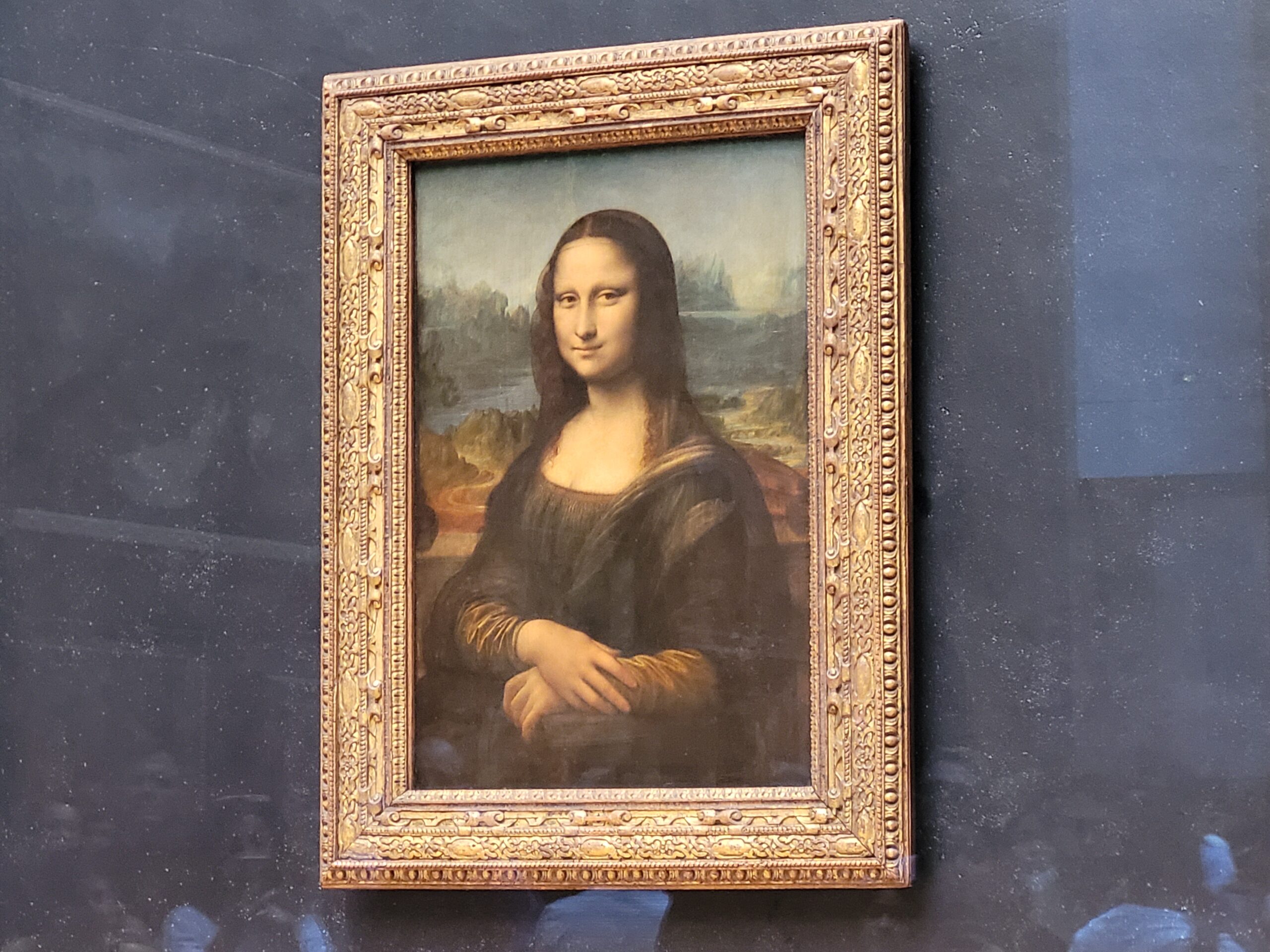
As with The Virgin on the Rocks, this is a leading example of sfumato. Leonardo’s intricate understanding of how the eye works from a scientific point of view informed his art, leading to artworks as transcendent as the Mona Lisa. The painting is now understood to be the pivotal masterpiece of the Italian Renaissance, the kind of work that defines a period of history and is now the most identifiable work of Leonardo’s.
4- The Saint John the Baptist – Louvre, Paris
This painting of Saint John the Baptist still contains many secrets yet to be uncovered. It might be the last painting that Leonardo ever worked on, and there is evidence that suggests it has been altered significantly by others.
The Biblical figure is shown in a very unusual way, giving him a sensuous quality — as opposed to the more popular depictions as hero or ascetic. That warmth and softness is repeated in the color palette which always stays dark and earthy. The beauty of the painting combined with the mystery of its alteration make it a compelling piece of art history worth seeing.
5- The Saint Anne – Louvre, Paris
This painting and the two above it were said to be the obsession of Leonardo up to his death. He continued to make tiny adjustments, perfecting them little by little for years. That attention to detail shows in a painting like this, where the artist manages to capture and balance the harsh grandeur of mountains and the gentle tenderness of a baby holding a lamb.
It is an example of what Leonardo does so well: creating massive scale while still imbuing his subjects with humanity. Consider the smile on the face of Saint Anne, the proposed grandmother of Jesus, as she watched her daughter lovingly dote on the child. So much sweetness contained in a painting that looks out into the cold, hard world beyond.
Da Vinci in Chambord, France
On the Da Vinci Road Trip from your driver service in Paris, you will be whisked away from the paintings of a master to view a startling architectural wonder beyond the city.
The Château de Chambord is a sublime landmark of French Renaissance architecture. Its size and proportionate design give it a magisterial presence that few buildings have ever attained.
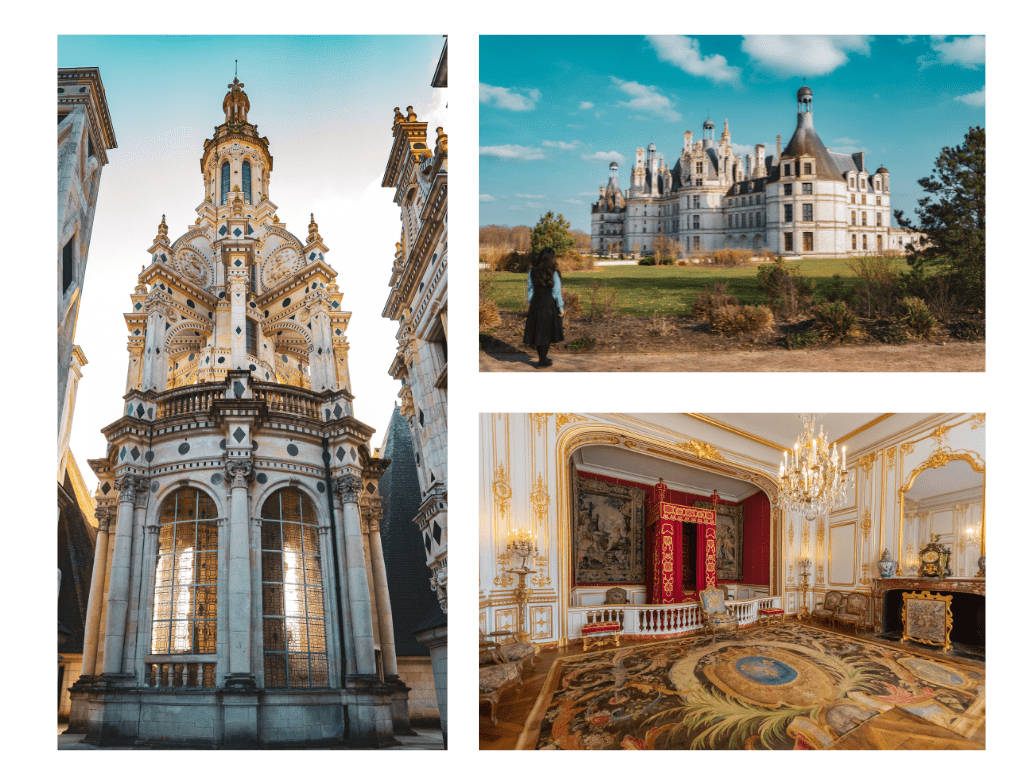
The entire premises center on a double-spiral staircase — a technical feat at the time of its creation and the key feature that has led historians to suspect Leonardo’s involvement. Though it is generally credited to architect Domenico da Cortana, experts believe that Leonardo played a major role in the conception of its design.
Da Vinci in Clos Lucé, France
After visiting Chambord, it is time to make our pilgrimage to the final home of Leonardo. He spent his final years here and died in one of its bedrooms, which is now named after him.
In this very house, he hosted a famous feast in gratitude to the French king. Leonardo set up a large replica of the skies, charting the course of the planets, Sun, and Moon through the Zodiac. It is the kind of centerpiece only a master of both engineering and artistry could conceive.
Known as Manoir du Cloux when it was inhabited by the Renaissance master, the mansion was renovated in the 21st century to make it as authentic to its original construction as possible. The now basement houses a variety of models created from Leonardo’s sketches. We are finally able to see the full scope of his inventive genius come to life.
Discover Leonardo during a day trip in France
Few lives are as inspiring as Leonardo da Vinci’s. His endless desire for knowledge and his tireless work ethic to learn and create left behind an amazing legacy.
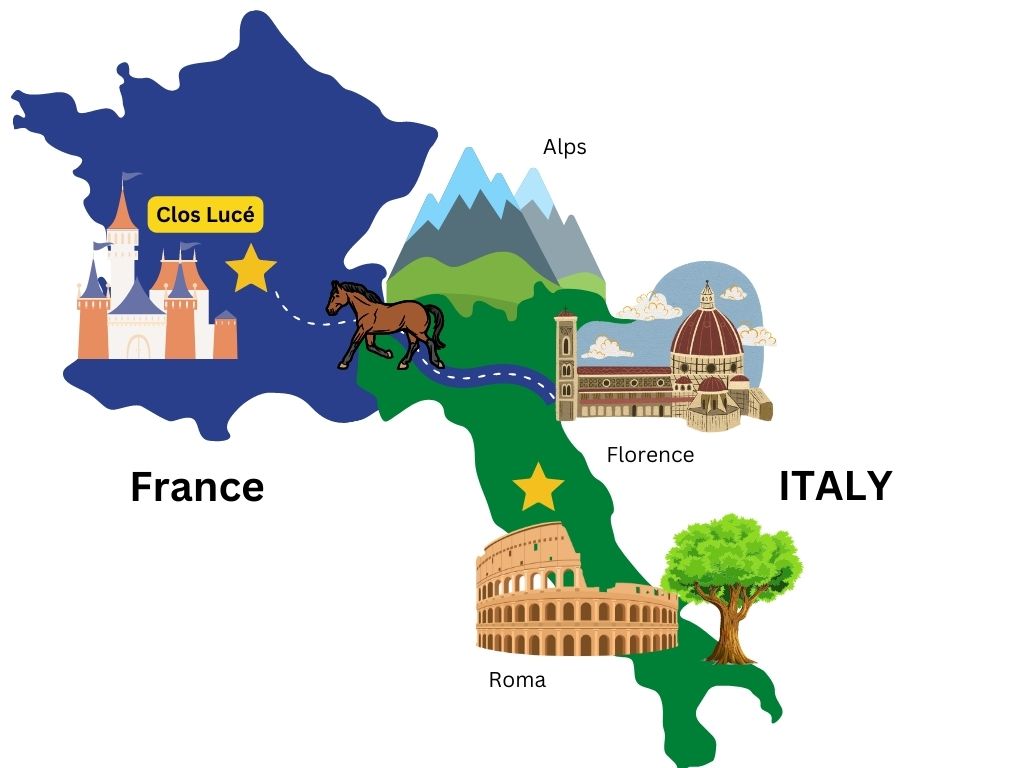
And you can find so much of that legacy in France. But to take it all in, you need to know where to look. That’s where I come in.
If you would like to get to know Leonardo like never before, hire me as your dedicated driver. I will take you on the road trip of a lifetime as we get to know the greatest Renaissance master!
